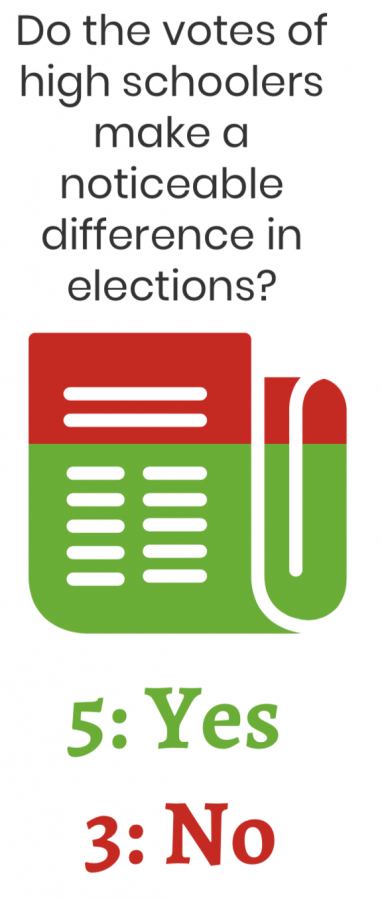Midterm elections misunderstood by young voters
January 18, 2019

Record numbers of citizens will head to the polls this year. Time magazine reported that over 800,000 Americans registered to vote on National Voter Registration Day. Even in the midst of an especially engaging midterm election, young voters still seem to be apathetic.
A poll conducted in June by The Atlantic reported that only 28 percent of young adults (ages 18 to 29) said they were “absolutely certain” they would vote in the midterm elections. Meanwhile, 74 percent of seniors said they would vote. The disparity in participation between ages shows how divided the generations in America are.
Young people have demonstrated their power impressively through movements like March for Our Lives and #MeToo, but if their push for change stops short of the polls it will be fruitless.
In the 2000-2016 responses to the Census Bureau, Americans cited their reason for not voting in midterms. Among the most common were “too busy” or “not interested.” In addition, younger people may be particularly less inclined to vote due to the overwhelming nature of researching local politics.
According to Jennifer Benz, principal research scientist from Associated Press, 83 percent of millennials get their news from YouTube and 50 percent from Instagram. While national politics are sensationalized and covered frequently on social media platforms, local news is not. This means that many millennials may be going without knowledge of local politics. They may be entirely unaware as to what the midterm ballots entail. An easy way to find it is to use IndyStar’s voter guide. The tool uses your address to determine what your ballot will look like.
Some of the positions featured for the Nov. 6 election include Senate, House of Representatives, HSE school board (see pp. 8-9), Indiana Supreme Court and Indiana Court of appeals, to name few.
Midterms are generally less glamorous than presidential elections. Nevertheless, these elections have a major impact. Indiana is currently choosing between incumbent Democrat Joe Donnelly or Republican Mike Braun for Senate. This year has emphasized how important senators are because the Senate made the decision to confirm Supreme Court Justice Brett Kavanaugh.
Based on a poll by Reuters taken in September, only 31 percent of the adults supported Justice Brett Kavanaugh for Supreme Court. However, on Oct. 6 Kavanaugh was confirmed by the Senate with a two-vote majority: 50 to 48. The decision will affect the Supreme Court for decades because justices are not required to step down after a certain time period like most government positions.
The story suffocated political news for weeks and eventually ended in deep division, yet the confirmation hearing only highlights a tiny part of the power of the U.S. Senate.
A House seat is also up for election between incumbent democrat Susan Brooks and Democrat Dee Thornton. Between the House and Senate, Congress writes bills, deals with national budgets and tax cuts, and handles foreign relations and more. Impeachment trials, which the Senate runs, have become involved in political discussions as of late.
Congress is crucial in a democracy. The power of those in the Senate and House is also partially the people’s power.
If younger voters ignore the opportunity we have to take our voices to polls, we run the risk of being dismissed in the future. Teens are memorable for their fierce dispositions and it is important not to let ourselves become indifferent where it really matters.

